Know Your Cheese : A Beginner’s Guide to Cheese
“ Cheese improves the flavor of life” Whether you’re a long-time cheese fan or a newbie, we can all agree that cheese is everything. This signature food is good on its own or mixed into ingredients for a more intense flavor. Made from milk, cheese is an excellent social food with tasty and comfort factors through the roof. So without further ado, this is our beginner’s guide to knowing your cheese below :
Making a Great Cheese
Cheesemaking is dated back a long time ago as historical evidence of cheese could be found in the Sahara desert as long as 4.000 BCE. This leads us to believe that the ancient way of producing cheese is through natural curdling of milk, which continued to evolve all the way to modern cheese production. 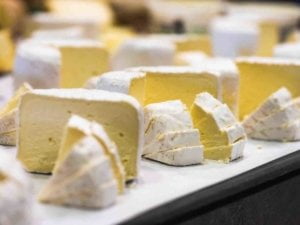 As for today’s cheese making, it involves several basic steps :
As for today’s cheese making, it involves several basic steps :
- Cooking milk and adding the starter culture for fermentation.
- Add a coagulant or rennet to curdle the enzyme in milk, turning its consistency to curd.
- Form and mold the curd, then drain the watery whey.
- Salt the cheese to enhance flavor, inhibit bacterial growth, preserve it and more.
- Age the cheese. The older, the better.
The steps may seem simple, but different productions all over the world will yield different results. This is because the cheese criteria such as : country of origin, type of milk, aging, tasting note and its specific uses. As a result, there are over thousands of cheeses in the world,up to over 750 in Britain and about 400 varieties in France alone! Ready to meet some of the most popular ones?
TOP 8 Cheeses You Should Know
Camembert
Origin : France Type of milk : Cow Aging : At least 3 weeks Tasting notes : Mild and mushroomy aroma Best use : Eaten as is, baked, breaded, deep fried, or as sandwich pair. 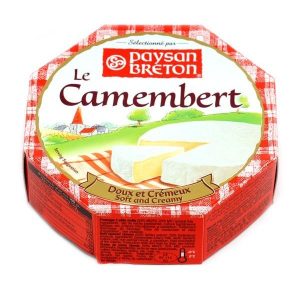
Camembert (125g)
Origin : Switzerland Type of milk : Cow Aging : At least 4 months Tasting notes : A hint of sweetness with easily-melted quality Best Use : Fondue, grilled or casseroles. 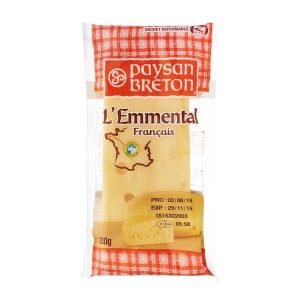
Emmental (250g)
Type of milk : Cow Aging : Briefly Tasting notes : creamy and buttery with semi-soft textures. Best Use : With bread, for cooking, eaten as is. 
Butter cheese (200g)
Rustic Baguette (250g)
Chevre
Origin : France Type of milk : Goat Aging : Varies Tasting notes : Lemony flavor, slightly chalky finish and can be combined with herbs. Best Use : Salad crumbles, breaded and fried, in sandwiches, macaroni and cheese. 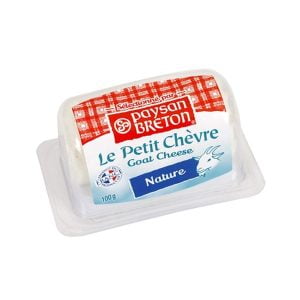
Chevre buche blanche / Goat cheese (100G)
Traditional Baguette (250g)
Feta
Origin : Greece Type of milk : Sheep & Goat Aging : About 3 months Tasting notes : Range from crumbly to moderately creamy. Best Use : Salad crumbles, sandwiches, or complement Mexican dishes.
Mozzarella
Origin : Italy Type of milk : Cow or Water Buffalo Aging : None Tasting notes : Fresh and dairy rich with mild creamy flavors. Best Use : Fresh/ eaten as is, paired with olive oil or tomatoes, pizza toppings.
Cheddar
Origin : England Type of milk : Cow Aging : No Minimum to a year Tasting notes : A wide range of flavors, from dry, deep, tangy, to smooth. Best Use : As is, sandwiches, grilled, casseroles.
Gouda
Origin : Netherlands Type of milk : Cow Aging : 4 weeks – a year Tasting notes : Almost like cheddar, it varies from creamy wax, hard to deeply flavorful Best Use : Melted, grated into salad or over casseroles. Luxofood carries most of these amazing cheese types with a variety for your to choose from, click here to start shopping!
The Best of Friends : Cheese & Wine
One of the main reasons why we love cheese so much is because of its versatility. Cheese can be eaten as is, but works great with other food ingredients too, from sandwiches, casseroles, toppings, and more. But when it comes to the ultimate food pairing, cheese always goes with wine. Science even has confirmed it! 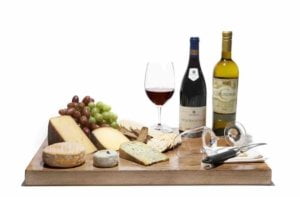
But why? This all melts down to finding a “mouthfeel” balance. The scientists believe that foods that are on opposite sides of taste usually create a pleasant sensation, triggering a food match. In their studies, cheese was shown to increase the aroma and decrease the duration of astringency for wines tested, and boosted the aroma of another. Basically, when the wine-feel gets stronger and slippery, cheese gets lessened thus creating an ideally balanced mouthful. But don’t take our or their words for it, head to Luxofood to pick your cheese and grab your wine for your own tasting experiment. We promise, you will look at this pairing in a new light that you have never thought possible before.





